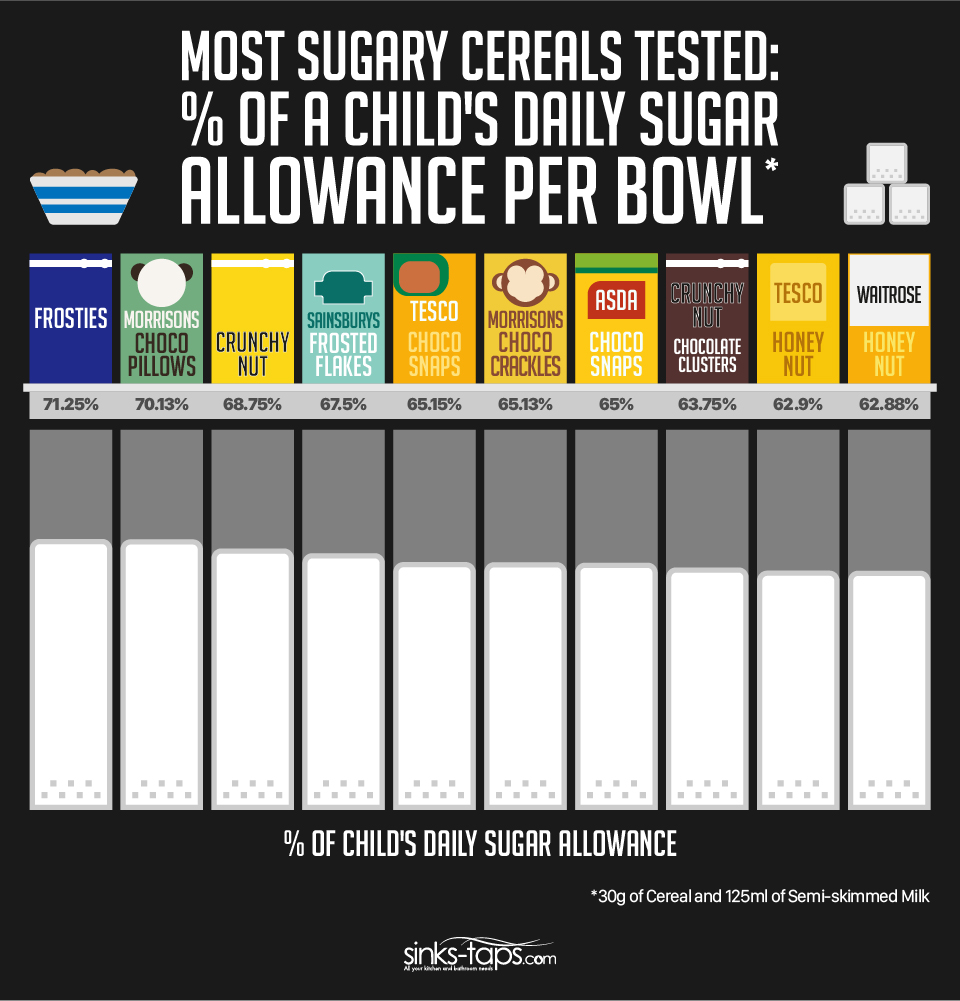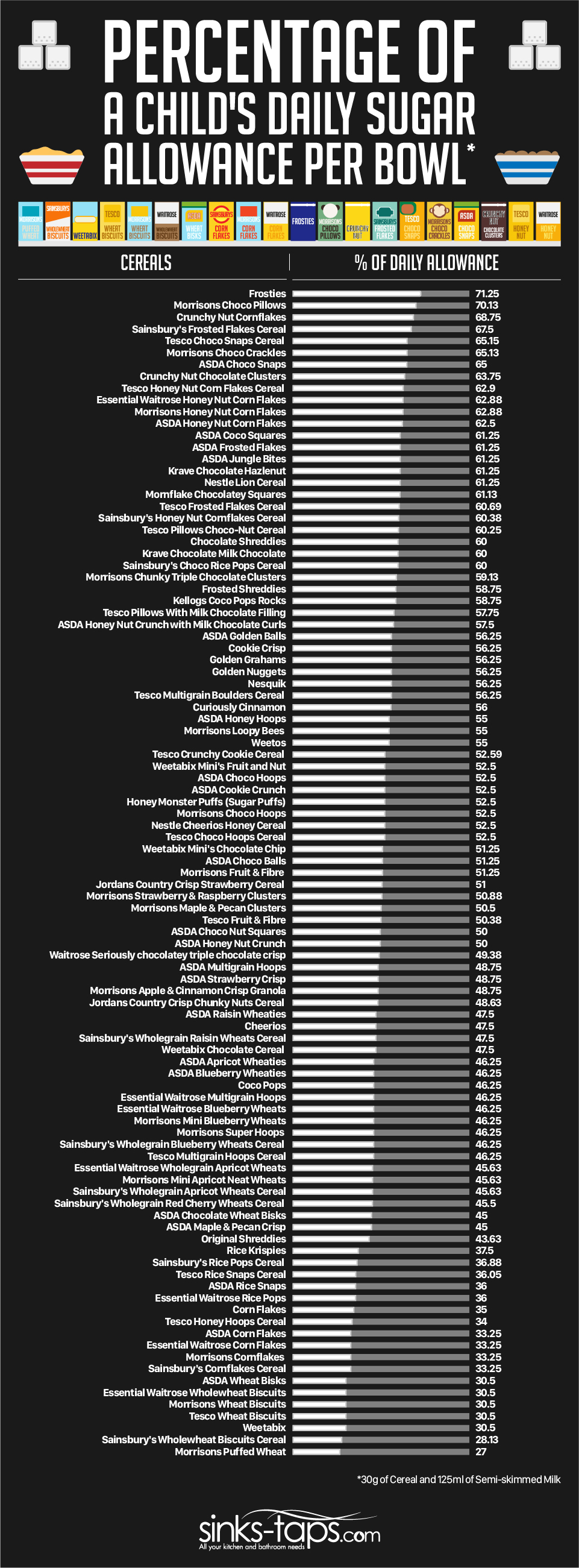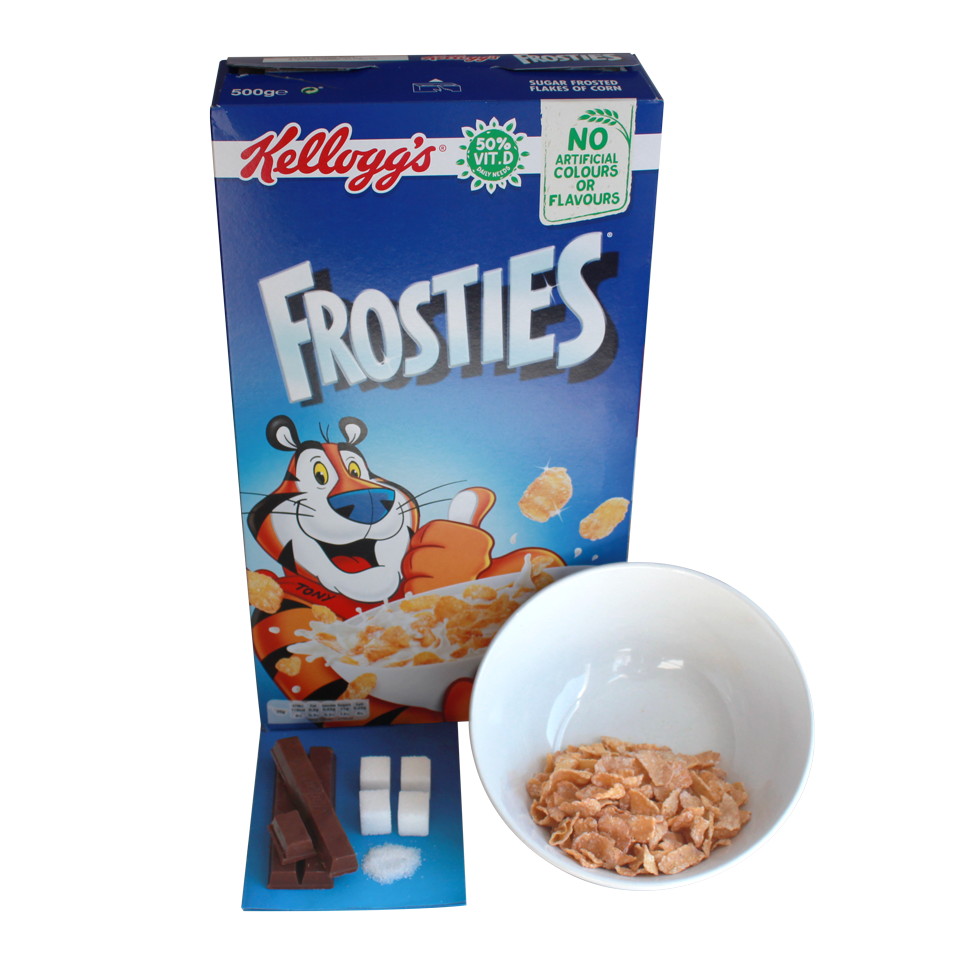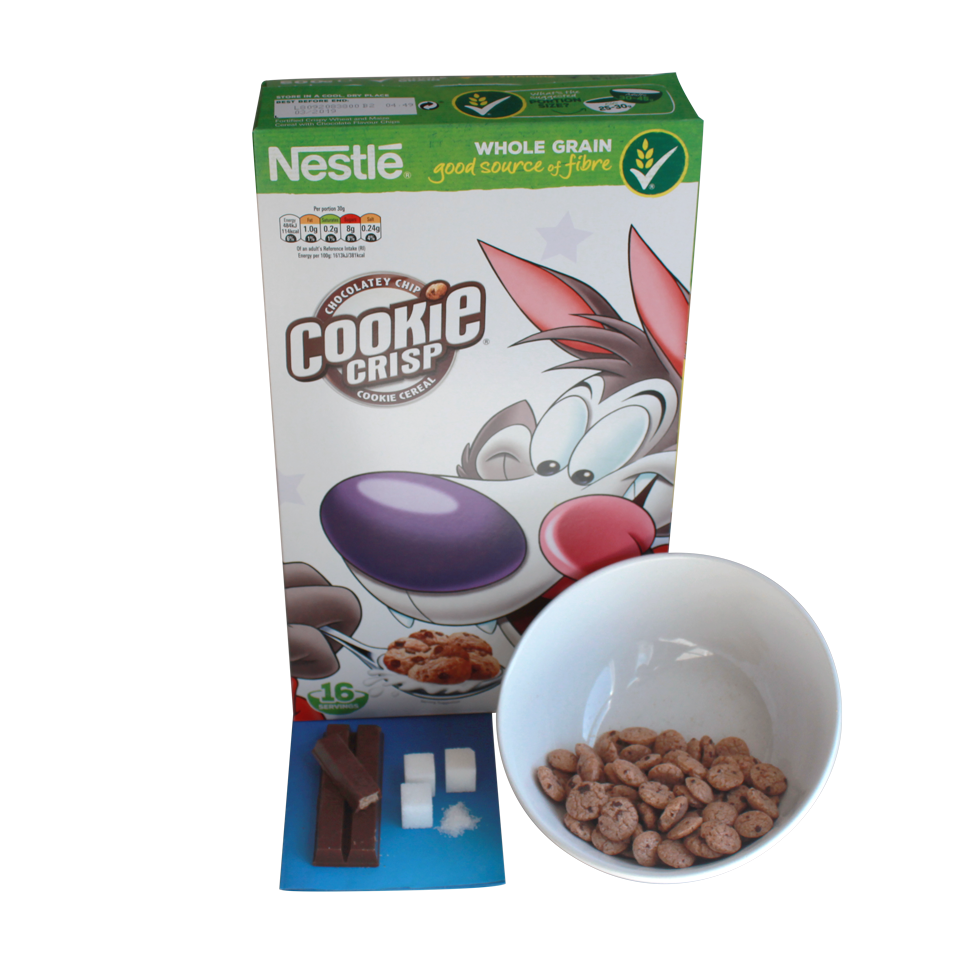As a family-run business, Sinks-Taps knows the importance of having a healthy selection of food in the kitchen. So, we decided to look into the sugar levels in kid’s cereals to help you make the healthiest choices for your child’s morning meal. With the recent news that Kellogg’s have recently cut sugar in Coco Pops, we had high hopes.
Our research, unfortunately, was very concerning…
Despite big name cereal brands pledging to reduce sugar back in 2017, the amount of sugar in your child’s cereals is shocking. We researched 99 of the most popular cereals from big names such as Nestlé and Kellogg’s, as well as supermarket-own equivalents, so you can see which cereals are the least healthy.
Out of the 99 boxes we looked at, 56% of those tested went above 50% of the daily recommended sugar intake for a child. None of the cereals were below 25% of the recommended child’s sugar allowance with lowest being 27%. The sugar amounts we found are based on the very modest recommended serving sizes of 30g with 125ml of semi-skimmed milk (the milk itself contains 6g of sugar). This amounts to only a few spoonful’s for your child’s brekky, realistically we can anticipate sugar consumption to be much higher.
What are the most sugary cereals?

|
A small 30g bowl of Frosties are 71.25% of a child’s daily allowance of sugar, which most children are likely to go over. With 17.1g of sugar in every bowl, that’s the equivalent of 4.26 teaspoons of sugar, 161ml of Coca Cola (almost half a 330ml can!) or just over 3 fingers of Kit Kat. Giving your child a bowl of Frosties each morning is like giving your child an extra 21 fingers of Kit Kat per week! |
|
Own brand cereals, while cheaper, aren’t necessarily better in terms of sugar. Morrisons Choco Pillows are the second worst of our survey, at 70.13% of a child’s recommended allowance of daily sugar in one bowl. With 4.21 teaspoons of sugar in each small bowl, it is the same as giving your child almost 5 and half Snickers bars every week. |
|
Crunchy Nut cornflakes are also an offender with 68.75% of your child’s daily sugar allowance being used by one small bowl. With the same sugar content as a bowl of Crunchy Nut, you could serve 4.13 teaspoons of sugar or almost 3 Kit Kats for the same sugary hit. |
|
Sainsbury’s own brand Frosted Flakes comes in fourth, using up a hefty 68.7% of your child’s daily allowance, packing a sweet punch of 4.05 tea spoons of sugar per bowl. While cereals that aren’t chocolate filled and nutty seem like they would be less healthy than light flakes, it turns out that 3 Kit Kats worth of sugar is hiding in every small bowl of frosted flakes. |
|
Tesco Choco Snaps come in fifth, with their version of chocolate rice cereal seeming to even outdo the old recipe of Coco Pops in daily allowance usage of sugar, hitting 65.15%. |
What about the most popular cereal brands?
Out of the most popular brands, these five stood out to be some of the worst….
|
|
|
|
|
|
|
|
|
|
Are Supermarket brands better for my children?
Think cheaper supermarket brands might have less sugar so they can stay cost effective? For most brands, this is true, meaning you can not only reduce your child’s sugar consumption, but you can save some precious pennies on what otherwise is quite a steep price on kid’s cereal.
For instance, the ever popular whole wheat biscuits made famous by Weetabix, actually are the lowest in sugar at Sainsbury’s, with 9.7% less sugar than every other store brand and Weetabix itself, which all had exactly the same amounts of sugar.
Want less sugar in your Weetos? Every store brand version from Tesco, Asda and Morrisons have 4.76% less sugar than the main brand. How about Crunchy Nut? Every store bought version contains less sugar, with Sainsbury’s having the least amount of sugar. Frosties being the worst offender for most sugar in cereal has some alternatives with less sugar, with the least amount of sugar being in Tesco’s Frosted Flakes cereal. However, be warned, these cereals are still very sugary, and use up a large chunk of your child’s daily sugar allowance.
Unfortunately, not all cereals have healthier store bought alternatives. With the fairly recent effort to reduce the sugar content of Coco Pops, every supermarket brand chocolate puffed rice alternative use 3.75 - 18.9% more of your child’s recommended daily sugar allowance.
Which children’s cereals have the least sugar?

Looking to keep your child’s sugar down in the morning? We found the best cereals were normally wheat biscuit cereals (such as Weetabix) and Corn flake like cereals (with supermarket brands having less sugar than traditional Cornflakes.) However, if you want the absolute least sugar, have Morrisons Puffed Wheat. Please note, all these cereal’s sugar usage are calculated without any added sugar added on top, so consider using some fruit instead of that extra teaspoon of sweetness, and possibly go for skimmed or non-dairy milk with less sugar!
Which Supermarket has the most sugar in its cereals?
Own brand cereals are popular for those looking to make some savings with their food shopping, but which supermarket’s are the worst to buy from when purchasing cereal for the family?
| Supermarket | Average Sugar per 30g |
| Tesco | 20.99 |
| Asda | 19.9 |
| Morrisons | 19.75 |
| Sainsburys | 17.68 |
| Waitrose | 15.01 |
From the boxes we looked at, Tesco unfortunately comes first, with their range of cereals proving the most amount of sugar overall. They may have pictures of cute, active animals playing sports on the box art, but this is not the fuel you want to give your children!
Want to cut down on the sugar? Try shopping for kid’s cereal at Waitrose, and stick to the whole wheat biscuits which have the lowest amount of sugar in their cereal range… but still contains 30.5% of your child’s daily allowance (with milk and no sugar sprinkled on top).
Or maybe just stick to the porridge!











